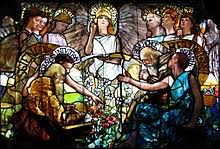Monday’s Macro Memo: “Macroeconomics: Religion or Science?”


Science and religion are strange bedfellows. Science dates from the enlightenment. Religion has been around since the dawn of history. Science is supported by rationalism. Religion is supported by dogma. Science is challenged by experiment. Religion is codified by scholars and protected by a priesthood. Macroeconomics has aspects of both.
Macroeconomists build theories codified by systems of equations. We use those equations to explain patterns in economic data. Unlike experimental sciences, chemistry and physics for example, macroeconomists cannot easily experiment. That does not mean that we cannot challenge existing theories; but it makes it much harder. Like astronomers waiting for the next supernova to explode; macroeconomists must wait for big recessions or large bouts of stagflation to help us sort one theory from another.
The inability to experiment is more serious than most macroeconomists realise. When CGG wrote their paper on monetary policy they put forward a New Keynesian (NK) theory. That theory was codified by three equations that they used to explain GDP, the interest rate and inflation. The NK equations are widely used today by policy makers in every major central bank to help guide policy. What if those equations are wrong?
Economists select one theory over another using a statistical procedure called maximum likelihood. We say that theory A is better than theory B if the data we observe has a higher probability of being generated by A than B. In research with my co-author Andreas Beyer of the European Central Bank, (Beyer and Farmer 2008) we showed how to produce theories that cannot be distinguished in this way. If you come up with theory A to explain data set X, our procedure will produce another, theory B, that has the identical probability of having generated the observed data as theory A.
It gets worse. We provide an example of this problem where theory A and theory B provide contradictory policy conclusions. The only way to tell them apart would be for a policy maker to experiment by changing the way they react to economic data. The Bank of England could, for example, raise the Bank Rate while, at the same time, the Federal Open Market committee lowers the US Federal Funds Rate.
Macroeconomists can explain past data relatively well. But we are not very good at explaining new events and our theories are always evolving. In that sense, economics is a science. The way that our models are allowed to evolve is controlled by a group of high-priests who maintain doctrinal purity. In that sense, economics is a religion. The religious aspect is important during normal times, when we have not recently experienced a big event. At other times, after we observe an economic supernova, the grip of the high-priests becomes counterproductive and it is a fertile time to explore ideas that the priesthood considers heretical. Now is one of those times.

















